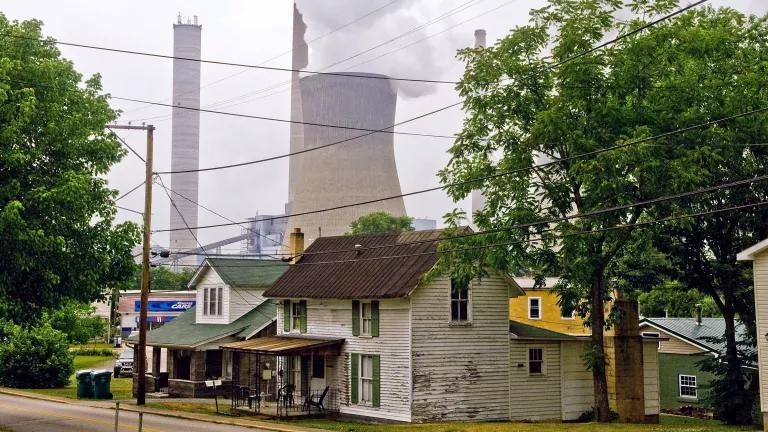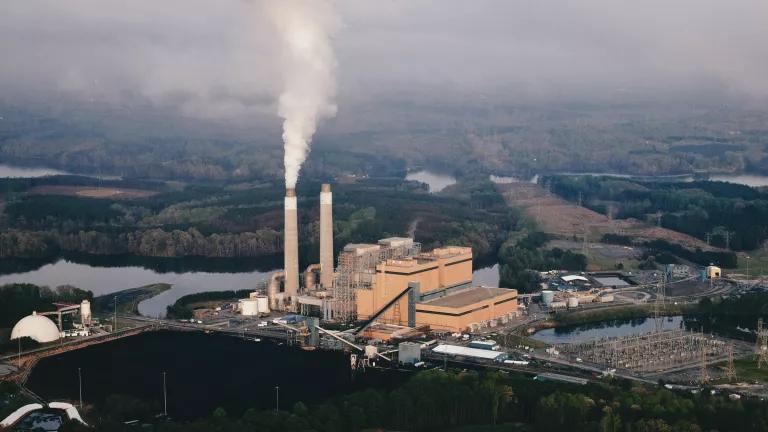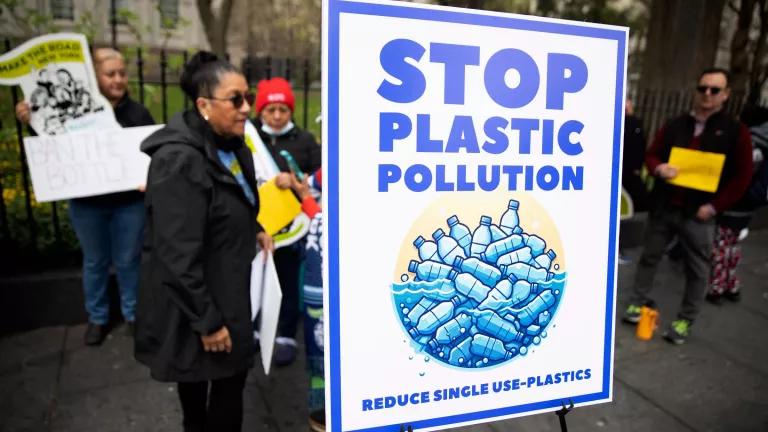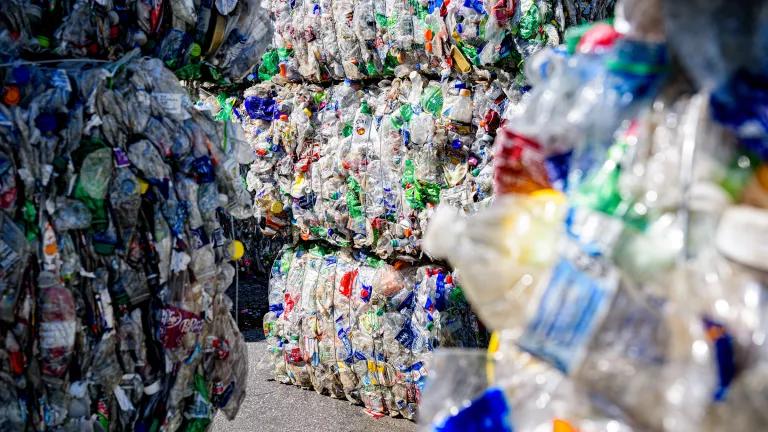In a Win for Health, the EPA Toughens Limits on Soot Air Pollution
Today's agency action will deliver life-saving protections from dangerous air pollution.

Soot air pollution from car and truck tailpipes, power plants, and other fossil fuel combustion seriously harms human health, damaging the heart, brain, and cardiovascular system and causing premature deaths.
Eric Vance/USEPA
In a victory for the health of all Americans, especially those most burdened by air pollution, U.S. Environmental Protection Agency (EPA) Administrator Michael Regan announced today the agency’s final decision strengthening limits on soot (fine particulate matter) in our air. These limits, a part of the Clean Air Act known as National Ambient Air Quality Standards, define how much soot pollution is medically unsafe to breathe and set the level to which this kind of pollution must be reduced across the country. Soot air pollution from car and truck tailpipes, power plants, and other fossil fuel combustion seriously harms human health, damaging the heart, brain, and cardiovascular system and causing premature deaths. With today’s strong action, Americans will breathe cleaner, healthier air. In fact, the EPA estimates that by 2032, these stronger soot limits will result in 4,500 fewer deaths and 800,000 fewer asthma attacks (among other health benefits) across the country each year.
First update of soot limits in 12 years
The current annual health limit for soot (PM2.5) pollution—12 micrograms per cubic meter—was set way back in 2012, and the Clean Air Act requires the EPA to reassess the limits every five years. Since 2012, the dangers of breathing in soot have become even clearer through hundreds of peer-reviewed scientific studies. That strong evidence base was thoroughly documented in the EPA’s nearly 2,000-page Integrated Science Assessment in 2019, which highlighted new harms from PM2.5, including nervous system effects and elevated cancer risks. Despite this evidence—and against the advice of EPA career staff and a panel of outside experts—in late 2020, the Trump administration's EPA declined to propose stronger limits on soot. During the first week of the Biden administration in 2021, NRDC and its coalition partners sued to force the EPA to reconsider that decision.
Later that year, the agency agreed to a fresh review of the soot limits and examined more recent scientific studies on the health dangers of soot than had been available for the 2019 science assessment. Reviewing the wealth of evidence on soot dangers, the EPA’s expert science advisors, the Clean Air Science Advisory Committee, in 2022 recommended that the agency tighten the annual standard to between 8–10 micrograms per cubic meter (with 8 being the safest level).
Early last year, the EPA proposed to tighten national limits on soot to a level between 9–10 micrograms per cubic meter and took comments on a wider range, 8–10 micrograms per cubic meter. In 177 pages of technical comments to the agency responding to its proposal, we pushed for it to set strong soot limits, because doing so was what the science supports and what the Clean Air Act requires by law.
"Soot puts tens of millions of Americans at risk, disproportionately harming low-income communities and people of color. It’s especially dangerous to vulnerable populations like children, the elderly, and those coping with compromised health. The EPA is putting public health first by requiring polluters to cut this dangerous pollution from the air we all breathe.”
Manish Bapna, President & CEO, NRDC
Stronger soot protections advance health and equity
While national air pollution reductions and health benefits delivered by the Clean Air Act have been substantial, the benefits of this landmark law have not accrued equitably. Millions of Americans are still living in areas with unsafe levels of soot air pollution—and low-income communities and communities of color are suffering disproportionately. Scientific studies show that marginalized populations, including Black Americans and low-income communities, continue to be exposed to disproportionately high burdens of soot air pollution. Those exposures contribute to health disparities that burden these populations with higher rates of life-threatening chronic health conditions, including heart disease, chronic obstructive pulmonary disease, and asthma. In fact, the most polluted census tracts across the country have barely changed since the 1980s.
Today’s action from the EPA will deliver important health benefits and advance environmental justice in air pollution-burdened communities. A recent analysis, for example, affirms the agency's estimate that today’s action will lead to thousands of deaths avoided from soot pollution exposure each year. Importantly, this study also indicates that the stronger soot limits will result in higher-than-average health benefits in low-income communities and communities of color that have been disproportionately burdened by dangerous soot pollution for decades. Based on 2020–2022 air-monitoring data collected by state environmental agencies, 119 counties (out of a total of 3,143) experienced annual soot air pollution levels above the newly revised limits. EPA modeling projects that 52 counties would not meet the strengthened standard in 2032.
Making cleaner air a reality
In 2026, the EPA will make initial determinations on attainment of these limits by taking a careful look at 2023–2025 air-monitoring data. Because soot air pollution is so dangerous and exposure is so widespread, it’s crucial that the agency continue to follow the science and the law when it comes to monitoring and enforcement of these Clean Air Act–mandated air pollution limits in the years to come. Doing so can help to make cleaner, healthier air a reality for more Americans.




